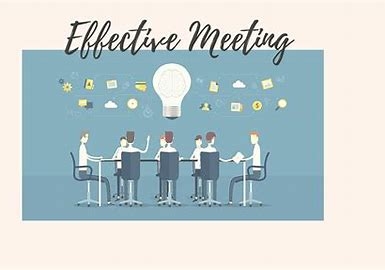How to Lead an Effective Meeting

Meetings are essential tools for collaboration, decision-making, and communication within any organization. However, without proper structure and leadership, they can easily become unproductive and time-wasting. Leading an effective meeting requires intentional planning, clear communication, and strategic follow-through. Here are key steps to help you run meetings that achieve results and keep participants engaged.
1. Set a Clear Purpose
Every meeting should have a specific goal. Whether it's brainstorming ideas, solving a problem, or making a decision, define the purpose before the meeting. Share this objective with participants ahead of time so they know what to expect and how to prepare.
2. Prepare an Agenda
An agenda is a roadmap for your meeting. It should outline the topics to be discussed, who will lead each segment, and how much time is allocated. Distribute the agenda in advance to keep the meeting focused and efficient.
3. Invite the Right People
Only include team members who are directly involved with or impacted by the meeting’s subject. Too many attendees can lead to off-topic discussions and wasted time, while too few might limit perspectives and input.
4. Start and End on Time
Punctuality shows respect for everyone’s time. Start your meeting as scheduled, regardless of who is late, and stick to the allotted end time. If additional discussion is needed, schedule a follow-up meeting.
5. Facilitate, Don’t Dominate
As the meeting leader, your role is to guide the conversation, encourage participation, and keep discussions on track. Allow everyone a chance to contribute and gently steer the conversation back if it goes off course.
6. Use Visual Aids and Tools
Support your meeting with slides, charts, or project management tools. Visuals can clarify complex points, maintain attention, and serve as reference points during and after the meeting.
7. Keep Discussions Focused
Prevent the meeting from drifting into unrelated topics by parking off-topic items for later discussion. A “parking lot” list can help you track those items without derailing the meeting.
8. Assign Action Items
End the meeting with clear next steps. Assign tasks, set deadlines, and ensure that each person understands their responsibilities. Document these action items and follow up as needed.
9. Encourage Feedback
Ask participants what worked well and what could be improved. Regular feedback helps refine your meeting approach and demonstrates a commitment to continuous improvement.
10. Share Meeting Notes
Send out a summary with key takeaways, action items, and deadlines. This keeps everyone accountable and ensures those who couldn’t attend are informed.
Conclusion
Leading an effective meeting takes more than just setting a time and place. With preparation, structure, and mindful facilitation, you can turn meetings into powerful tools for progress and collaboration.
- Arts
- Business
- Computers
- Juegos
- Health
- Home
- Kids and Teens
- Money
- News
- Recreation
- Reference
- Regional
- Science
- Shopping
- Society
- Sports
- Бизнес
- Деньги
- Дом
- Досуг
- Здоровье
- Игры
- Искусство
- Источники информации
- Компьютеры
- Наука
- Новости и СМИ
- Общество
- Покупки
- Спорт
- Страны и регионы
- World


